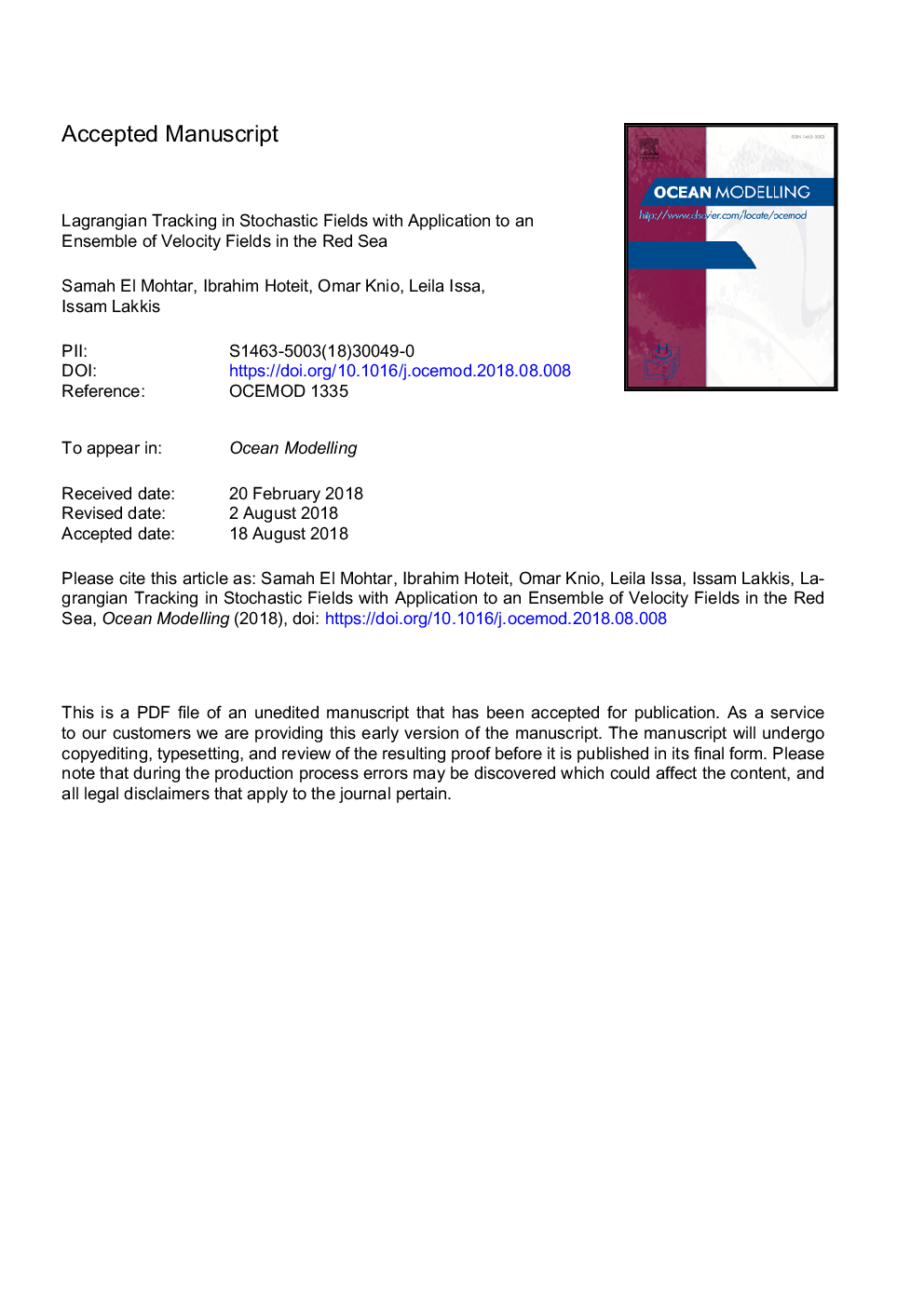| Article ID | Journal | Published Year | Pages | File Type |
|---|---|---|---|---|
| 8959431 | Ocean Modelling | 2018 | 34 Pages |
Abstract
Lagrangian tracking of passive tracers in a stochastic velocity field within a sequential ensemble data assimilation framework is challenging due to the exponential growth in the number of particles. This growth arises from describing the behavior of velocity over time as a set of possible combinations of the different realizations, before and after each assimilation cycle. This paper addresses the problem of efficiently advecting particles in stochastic flow fields, whose statistics are prescribed by an underlying ensemble, in a parallel computational framework (openMP). To this end, an efficient algorithm for forward and backward tracking of passive particles in stochastic flow-fields is presented. The algorithm, which employs higher order particle advection schemes, presents a mechanism for controlling the growth in the number of particles. The mechanism uses an adaptive binning procedure, while conserving the zeroth, first and second moments of probability (total probability, mean position, and variance). The adaptive binning process offers a tradeoff between speed and accuracy by limiting the number of particles to a desired maximum. To validate our method, we conducted various forward and backward particles tracking experiments within a realistic high-resolution ensemble assimilation setting of the Red Sea, focusing on the effect of the maximum number of particles, the time step, the variance of the ensemble, the travel time, the source location, and history of transport.
Keywords
Related Topics
Physical Sciences and Engineering
Earth and Planetary Sciences
Atmospheric Science
Authors
Samah El Mohtar, Ibrahim Hoteit, Omar Knio, Leila Issa, Issam Lakkis,
